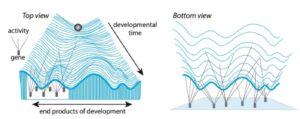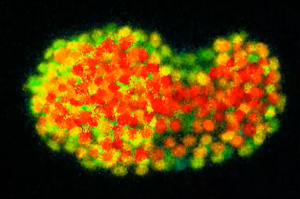The importance of chiral rotatory movements of the actomyosin cortex, involve in cellular rearrangements, during C. elegans embryo development.
Stephan W. Grill et al. published an article revealing the importance of chiral rotatory movements of the actomyosin cortex in cell position during development of Caenorhabditis elegans embryo. They highlight mechanisms by which rotatory actomyosin flows can specify and reorient the cell division axis. Chiral counter rotating flows drive the AB lineage spindle skew and the reorientation events, giving to them an importance in morphogenesis. This important discovery may give rise ideas about tissue homeostasis and regeneration.

Ultra fast temperature shift device for in vitro experiments under microscopy
Abstract
“Proper positioning of cells is important for many aspects of embryonic development, tissue homeostasis, and regeneration. A simple mechanism by which cell positions can be specified is via orienting the cell division axis. This axis is specified at the onset of cytokinesis, but can be reoriented as cytokinesis proceeds. Rotatory actomyosin flows have been implied in specifying and reorienting the cell division axis in certain cases, but how general such reorientation events are, and how they are controlled, remains unclear. In this study, we set out to address these questions by investigating early Caenorhabditis elegans development. In particular, we determined which of the early embryonic cell divisions exhibit chiral counter-rotating actomyosin flows, and which do not. We follow the first nine divisions of the early embryo, and discover that chiral counter-rotating flows arise systematically in the early AB lineage, but not in early P/EMS lineage cell divisions. Combining our experiments with thin film active chiral fluid theory we identify specific properties of the actomyosin cortex in the symmetric AB lineage divisions that favor chiral counter-rotating actomyosin flows of the two halves of the dividing cell. Finally, we show that these counter-rotations are the driving force of both the AB lineage spindle skew and cell reorientation events. In conclusion, we here have shed light on the physical basis of lineage-specific actomyosin-based processes that drive chiral morphogenesis during development.”



